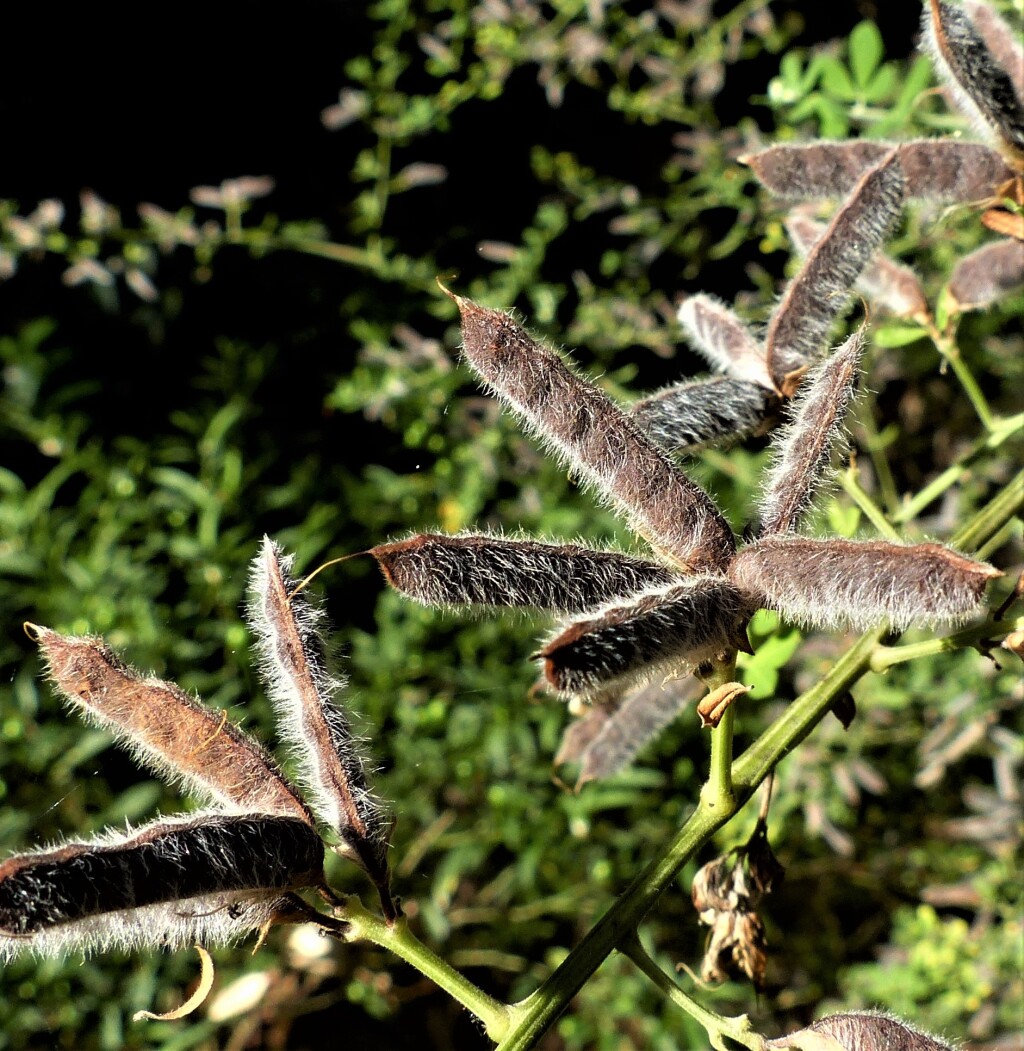Genista monspessulana
(L.) L.A.S.Johnson Montpellier BroomErect shrub to 3 m tall; stems pubescent with appressed or spreading hairs, ribbed. Leaves trifoliolate, shortly petiolate; leaflets obovate, 0.5–2.5 cm long, 2–15 mm wide, subsessile, sparsely appressed-pubescent, often glabrescent above, margins flat, apex mucronate; stipules triangular-lanceolate, 1–2 mm long. Flowers 3–7 in condensed terminal racemes to c. 2 cm long; bracts 1–3-foliolate, 2–7 mm long, pubescent, basal on pedicel; bracteoles subulate, c. 1 mm long, pubescent, attached at base of calyx. Calyx 4–7 mm long, pubescent, teeth not longer than tube; corolla 8–13 mm long; standard more or less glabrous. Pod narrow-oblong, 15–30 mm long, densely pubescent; seeds 6–7, globose, c. 3 mm long, somewhat compressed, shiny, black, aril small, tan Flowers mainly Aug.–Nov.
Wim, GleP, VVP, VRiv, MuF, GipP, OtP, WaP, Gold, CVU, GGr, DunT, NIS, EGL, EGU, HSF, HNF, OtR, Strz, MonT, VAlp. Also naturalised WA, SA, Qld, NSW, NI, ACT, Tas (naturalised). Native to Europe, the Mediterranean area. A garden or hedge plant that has become established throughout higher rainfall parts of the State, and readily invades disturbed areas such as roadsides, fence-lines and grazing land. Declared a noxious weed in Victoria.
Plants may not always be readily distinugished from Genista stenopetala and G. ×spachiana. There are taxonomic difficulties in this group and interspecific hybridization appears to be rather common. These 2 species vary only in their many-flowered terminal racemes and slightly larger leaflets but these features, on some specimens, grade into G. monspessulana. The majority of collections in Victoria are included in G. monspessulana.
Jeanes, J.A. (1996). Fabaceae. In: Walsh, N.G.; Entwisle, T.J., Flora of Victoria Vol. 3, Dicotyledons Winteraceae to Myrtaceae, pp. 663–829. Inkata Press, Melbourne.
 Spinning
Spinning



